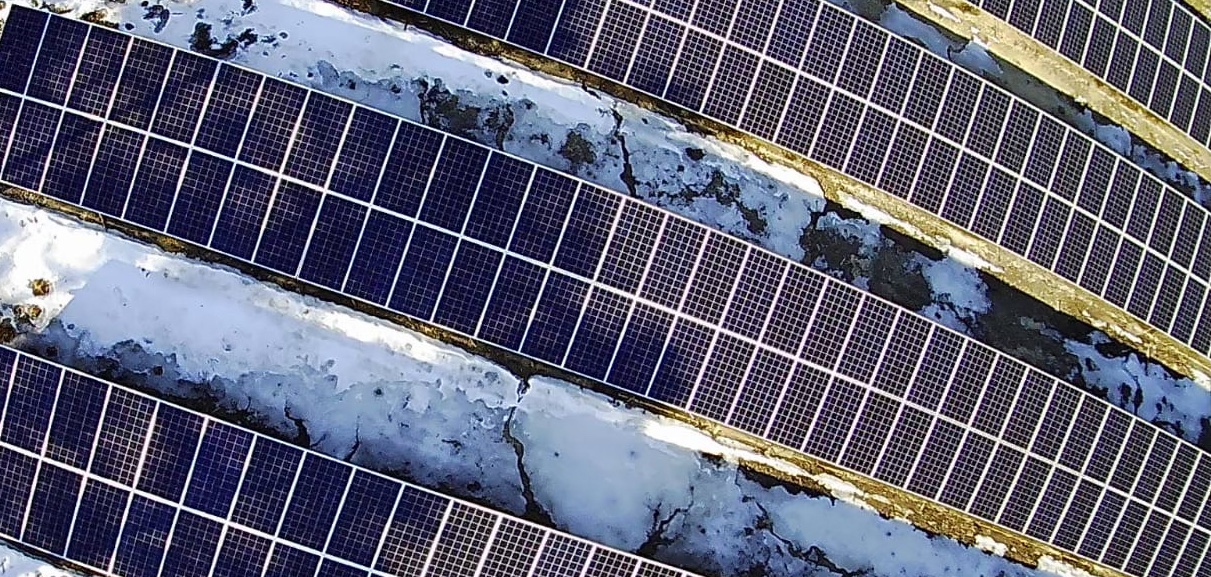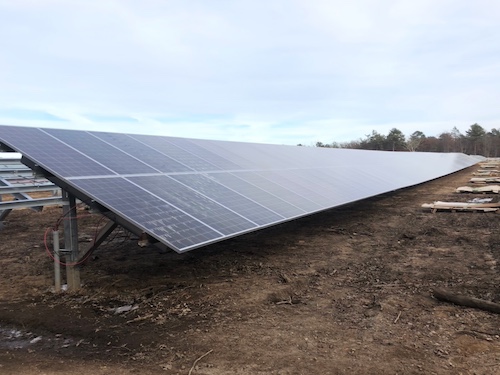My Dream of Building a Solar Farm and the Systemic Barriers that Nearly Killed It
Throughout my life and career as a real estate developer in New York City, I’ve had many successes. In what is clearly one of my most unusual development projects in a long career filled with them, I initiated the building of a solar farm to help the environment.

The Middle Island Solar Farm (MISF), located on Long Island, NY’s eastern tip, has been fully operational since 2018. It produces 19.6 MW of electricity. That’s roughly equivalent to powering 4,000 Long Island homes per year. The clean solar energy it produces is also equivalent to removing 6,000-8,000 cars with noxious emissions from the roadways. That’s good news, and it pleases me that my vision and goal of using private investment for the public good has been actualized. The not-so-good news is that there are systemic barriers to private investment in clean energy projects like MISF. I’m sure I found every single barrier along the way. Are you familiar with the sad-but-true old saw that it is the pioneers who always catch the arrows? Well, I seem to have caught more than my share: It took five years to even receive a permit to build the solar farm and jump through all the regulatory, zoning, and local opposition hoops. Flaming hoops. It only took just eight months to actually build it. Those are completely unbalanced factors.

This MISF chapter of my life began in 2012, and was inspired by my growing interest in environmental stewardship and fear for the future of my grandkids and the planet at large. I had just finished designing and building a green home for myself and my wife Paula in Southampton, Long Island. It was built utilizing many of the most innovative and effective energy-saving technologies of that time, and I was fascinated with both the exploration process and the results. Not long afterward, while on vacation in Southern Italy, Paula and I stopped to admire a vast solar array we had chanced upon. From the road, it looked like a lake. It was my first time seeing one up close and my curiosity was really stoked when I learned that this solar farm benefited the local farming community as a clean energy source. With an unsurprising Italian efficiency and elegance, they even had a variety of crops like tomatoes growing lushly beneath the array. Inspired by this Italian solar installation, I decided that I wanted to develop a solar farm on a one-hundred-acre plot of land I was a part-owner of not far from our Long Island home. That’s how MISF began.
Now that I have the experience of privately developing a solar farm, I’ve learned about the many obstacles involved, from political opposition to community resistance to regulatory barriers. In my new book, I detail the obstacles that I believe have slowed the process of shifting to renewable energy nationwide.
 The NIMBY (Not in My Backyard) mindset
The NIMBY (Not in My Backyard) mindset
The solar farm’s fiercest adversaries were determined to keep it out of their backyards from the onset. There is always a leader, a formidable foe that swayed neighbors, the press, and government affiliates with barrages of disinformation — and they threw me and my partners one curveball after another.
They utilized the slogan of “No Green for Green” to make a stance against removing trees. In the environmental field, there are two camps: one is Preservationist and the other is Protectionist. The preservationists try to keep things the way they are; the protectionists aim to protect the future. In this instance, the preservationists wanted to protect the trees that covered the property. As a protectionist, I understand the trade-off in opting for renewables in this case. According to our third-party environmental study, our solar farm reduces carbon by 36,000 to 42,000 tons per year as compared to only 84 tons that would have been removed by the 60 acres of treed property.
Why, they even compelled us to build hundreds of homes for long-eared bats, irrespective of an environmental study showing that that species of bat wasn’t mating in our area.
Obtuse zoning laws
Antiquated zoning laws made the project an easy target for the rejection of any modifications needed for approving MISF, and the entire process became mired in unnecessary political and community opposition.
At the time, there was no existing code for a solar farm in this community. What’s more, they shockingly classified us as an electric generating plant! The two aren’t even comparable. An electrical plant requires much more construction, safety requirements, and is significantly more capital intensive to build. Being held to the same standards when they’re so different simply isn’t logical.

In the end, we were categorized under a new solar farm code. We were the first to fall into this new categorization, and found out that it was filled with its own set of problems.
Government red tape
Lengthy, costly bureaucratic processes involving both the local and Federal governments – including the Environmental Protection Agency (EPA) - seemed designed to thwart the project.
Costly hurdles preventing profit
Opponents, red tape, political and legal battles - all of these hurdles delayed our plans and cost millions to overcome. To date, our return on investment has been relatively small. That’s a huge disincentive for private investment in such globally beneficial projects.
In the end, I am happy that MISF is operating and producing clean, renewable energy. The obstacles and harsh delays are not something I wish on others. In order to make the path to clean energy more viable, our regulations and incentives need to be revised to engage, rather than discourage citizen participation. Future generations depend on it.
 Jerry Rosengarten is a Brooklyn-born serial entrepreneur whose greatest skill is an extraordinary ability to perceive form and structure – and opportunity – from within disorder, including developing products to deal with dyslexia, reimagining real estate, and investing early and heavily in solar energy. Rosengarten’s life of invention has led to substantial commercial success. His first big hit came in the 1970s with the leisure suit, which became a cultural fashion phenomenon that stoked his confidence and staked his growing desire to build landmark New York projects like the Lofts and the A-list destination, The Bowery Hotel. Today, Rosengarten owns one of the largest private solar farms in the Northeast, located on Long Island's eastern tip, and his creative passions are focused on environmental stewardship and active advocacy for those suffering from learning disabilities. He recounts his experiences in his new book, Jump on the Train: A Dyslexic Entrepreneur’s 50-Year Ride From The Leisure Suit to the Bowery Hotel and a New York Solar Farm. He can be reached at [email protected].
Jerry Rosengarten is a Brooklyn-born serial entrepreneur whose greatest skill is an extraordinary ability to perceive form and structure – and opportunity – from within disorder, including developing products to deal with dyslexia, reimagining real estate, and investing early and heavily in solar energy. Rosengarten’s life of invention has led to substantial commercial success. His first big hit came in the 1970s with the leisure suit, which became a cultural fashion phenomenon that stoked his confidence and staked his growing desire to build landmark New York projects like the Lofts and the A-list destination, The Bowery Hotel. Today, Rosengarten owns one of the largest private solar farms in the Northeast, located on Long Island's eastern tip, and his creative passions are focused on environmental stewardship and active advocacy for those suffering from learning disabilities. He recounts his experiences in his new book, Jump on the Train: A Dyslexic Entrepreneur’s 50-Year Ride From The Leisure Suit to the Bowery Hotel and a New York Solar Farm. He can be reached at [email protected].
Author: Jerry Rosengarten











.png?r=9941)
